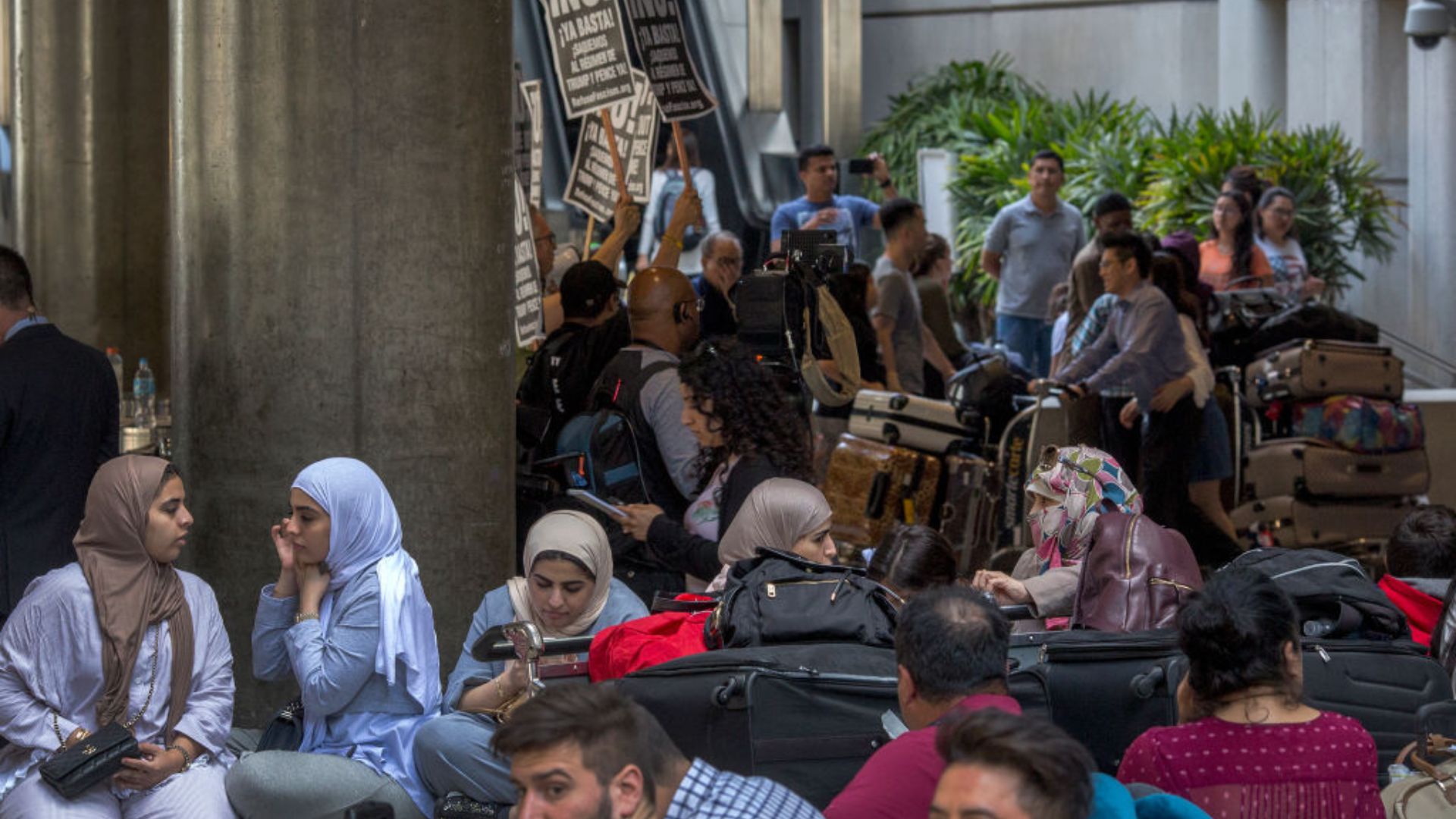Suburbs Bear the Burden as US Release Asylum Seekers and They Have No Where to Go But the Streets
The suburbs of San Diego, particularly Oceanside, are experiencing a significant influx of asylum seekers. U.S. border officials, facing a record number of arrivals, have released thousands of migrants in the area.
Over the past month, about 1,400 asylum seekers found themselves in Oceanside, a situation prompted by the overwhelming numbers arriving at the U.S. border.
Transit Center Drop-offs
Customs and Border Protection vehicles are consistently seen at the Oceanside transit center. The area, home to approximately 172,000 residents, has inadvertently become a transit hub for thousands of migrants.

Source: Getty Images
About 18,500 individuals have been released on the streets of San Diego since September 13, according to local government and humanitarian organizations.
The Role of NGOs and Local Governments
In cases where non-governmental organizations are over capacity, the Border Patrol collaborates with local governments to find alternative locations for migrants to access transportation or accommodations.

Source: Getty Images
This practice has become common in districts like San Ysidro and suburbs such as Oceanside and El Cajon, illustrating the widespread impact of the immigration crisis.
Communities and the Immigration Crisis
Communities distant from the border are finding themselves part of the immigration narrative. Local officials are requesting additional federal funds to manage the influx of migrants.

Source: Deputy Mayor Ryan Keim/Facebook
Deputy Mayor Ryan Keim expressed uncertainty regarding the duration of this situation, highlighting the dual challenges of the existing homeless crisis and the emerging migrant issue.
Political Responses
U.S. Representative Mike Levin has voiced his concerns about the street releases of asylum seekers. In communications with constituents, he stated that he is advocating for increased funding to manage the situation.

Source: Getty Images
The intersection of political decisions, funding, and human lives continues to play out in real-time, amidst a broader national dialogue on immigration.
Arrival of Asylum Seekers
A significant number of the new arrivals are from Guinea. Armed with their immigration court notices, these individuals are a part of the over 204,000 migrants that U.S. border officers have encountered in the San Diego sector, marking a 27% increase from the previous year.

Source: Getty Images
The arrival scene is a mix of uncertainty, anticipation, and diverse human stories.
The Asylum Process
The U.S. asylum process is intricate. Although many are seeking asylum, a small percentage of applications are approved.

Source: Getty Images
Migrants are expected to demonstrate their need for protection from persecution in their home countries. This requirement stands as a significant hurdle for many, as evidenced by the less than 15% approval rate for petitions.
Individual Stories
Hanieh Sadat Siadati, an Iranian asylum seeker, was released with the words, “We can’t help you, just go.” Her journey to the U.S. involved participation in street protests and a perilous journey through nine countries.

Source: Getty Images
Like many others, she arrived scared and overwhelmed but found support from volunteers and organizations in Oceanside.
Nonprofit Intervention
Nonprofit groups are pivotal in helping the migrants, many of whom are unaware of their location upon arrival. These organizations assist in booking flights to unite the asylum seekers with their families across the U.S.

Source: Getty Images
For those who cannot immediately find transportation, temporary shelter is provided at churches and through the efforts of Interfaith Community Services.
Continuous Releases
The release of migrants is a daily occurrence, with nearly 600 people arriving on the streets of the San Diego area every day.

Source: Getty Images
This data, provided by the Immigrant Defenders Law Center, underscores the scale of the situation. Both the local communities and the arriving migrants are navigating an environment of constant change and adaptation.
The Role of Interfaith Community Services
Interfaith Community Services has been instrumental in addressing the influx. The organization claims to have successfully placed 95% of arriving migrants with their sponsors and families.

Source: Interfaith Community Services/Facebook
However, Fiona King, the group’s director of development, acknowledged the sustainability concerns associated with the continued arrival of asylum seekers, highlighting the need for additional resources.
Facing an Uncertain Future
The unfolding situation in Oceanside and the broader San Diego area highlights the complex and multifaceted nature of the immigration crisis.

Source: Getty Images
With the continuous influx of asylum seekers, the city and its residents, officials, and humanitarian organizations are navigating a landscape of uncertain outcomes, resource challenges, and an evolving narrative of migration and asylum in America.
